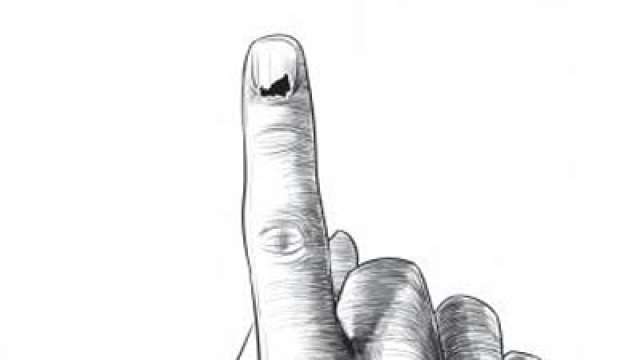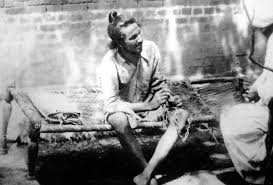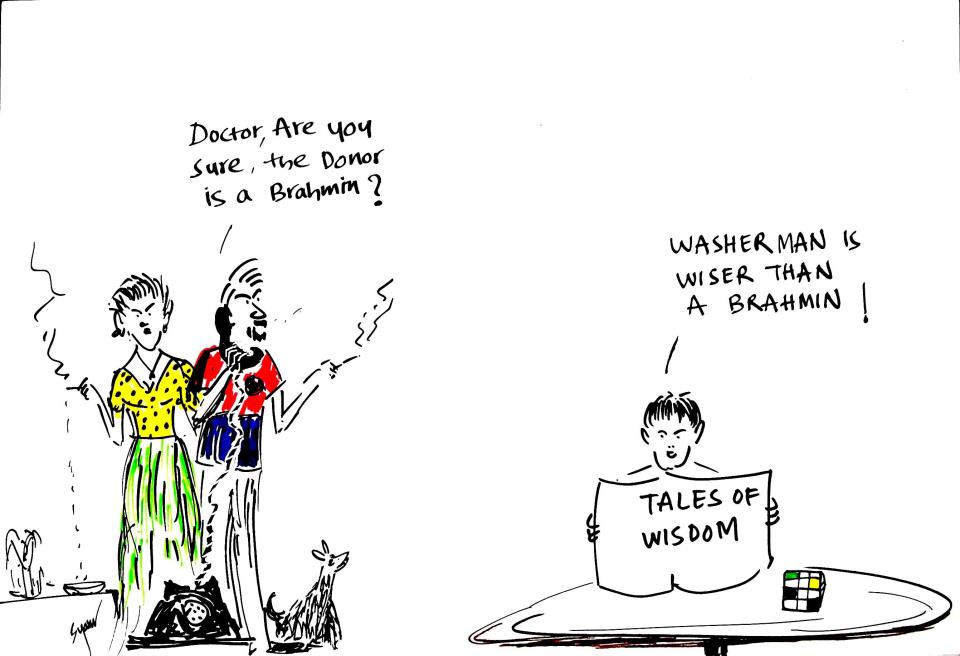S. Kumar
The potential manipulation of Electronic Voting Machine (EVM) was demonstrated by Mr Hari Prasad in 2010. He published research papers with US Scientist and demonstrated on a TV show that EVMs can be hacked. Mr. Hari Prasad was jailed for his incredible work.

Senior political leaders like Mr. Waman Meshram and others filed multiple petitions in the Supreme Court and campaigned against EVM for a long time. In 2013, the Supreme Court agreed that EVM can be hacked and ordered that the VVPAT method to be implemented by 2019.
However, even though the Supreme Court never said that EVMs can continue, the Election Commission continued the election process with EVM. In recent UP elections, charismatic leader Mayawati blamed the results on EVM manipulation. Many Maharashtra politicians could not get even a single vote (not even their own vote) in the local elections completed using EVM receently. Further, one instance of live demonstration of EVM machine with printer was captured on camera in Madhya Pradesh, showing votes were polled in favor of BJP even when votes were cast for another party. The polling officer even threatened the people present there with filing police cases if they they leaked the information.
One of many important questions is why did the Supreme Court order that VVPAT should be implemented by 2019? Why did the court not gave any order for voting between 2013 to 2019? If VVPAT was not ready and EVM is proved to be tamperable, and hence threatens democracy, then why was paper ballot not used? Should democracy wait for VVPAT machine? Did India have EVM or VVPAT machines in 1951 election, or should Indian leaders have waited for EVM and VVPAT for achieving independence and establishing democracy? If India can’t afford to invest money in paper ballot, does it deserve to be called a sovereign democratic republic?
For detailed evaluation of how EVM is killing the trust in electoral system of India, please refer to the author’s earlier article.[1] After a long struggle by many people, the Supreme Court ordered that VVPAT should be used for elections. After trial run in multiple states with VVPAT method, let us look at the challenges faced by the administration in implementing it.
The challenges posed by EVM can be categorized under two major heads; first verification of the votes after completing the polling process, and second recording of that correctly with voter satisfaction. Let us look how current processes of the election commission fail miserably to overcome the challenges to completing free and fair election:
1. Recounting of votes – The most important challenge under the EVM process is that there is no way of revalidating the electronic votes counted, other than pressing the sum button again on the machine. If the votes were recorded wrongly or modified after the voting process and before the final counting date, there is absolutely no way to revalidate the votes.
Over time, Election Commission has prescribed following rules for recounting of paper receipts. Following are the prescribed rules
The Returning Officer shall pass a speaking order on whether the counting will be done or not after considering the following [2]: –
i) Whether total number of votes polled in that polling station is more or less than the margin of votes between the winning candidate and the applicant
ii) Whether EVM met with any defect and was replaced at that polling station during poll
iii) Whether there was any complaint about the VVPAT not printing the paper slips or complaint under rule 49MA by any voter in that polling station during the poll
Further, 49MA reads: Where a printer is used, if an elector after having recorded his/her vote alleges that the paper slip generated by the printer has shown the name or symbol of a candidate other than the one he/she voted for, the Presiding Officer shall obtain a written declaration from the elector on the veracity of the allegation, after warning him/her of the consequence of making a false statement.[3]
“The demand for VVPAT vote counting will be accepted provided it can influence the ultimate results of a constituency,” Regarding why recounting cannot be done for an entire constituency, the Election Commission says, “It is a thermal paper which is very difficult to separate. Then you will need creation of additional infrastructure like pigeon holes for all candidates, additional staff for counting.”
In July 2017, the Election Commission came with the guidelines to mandatorily tally paper trail slips with the results of EVMs in five per cent of polling stations in each assembly seat, for all state and Lok Sabha elections. Further, maximum limit of 14 and a minimum limit of five polling stations was imposed. [4]. Now Election Commission is considering review of this decision of mandatory recounting, and may decide to go back to previous rules. [5]
Under the current process of VVPAT machine implementation, multiple issues have been identified.
a. Rare cases of recounting of paper ballots – After huge noise from political parties, activists and public at large, VVPAT has been under the trial phase of implementation for the last few years. However, there have been only a few cases of recounting of paper ballots. Election Commission has put such very strict conditions for allowing any recounting.
Paper receipts are printed for two reasons, first for voters to verify their ballot entry and second for recounting of paper ballots. Paper receipt is not sufficient proof that the electronic recording of vote is the same as in the printed paper ballot receipt. Only recounting of paper ballots can give a voter confidence that what he saw on paper was actually counted for declaring the results. There is no sense in printing and throwing away the paper receipt.
Only recently, there have been a few (4) cases of VVPAT receipt recounting in Goa Assembly election. These can be called rare cases among more than than 100s of cases of VVPAT polling.
b. Recounting rule in case of malfunction of EVM- As mentioned above, there is only one way to ensure that what is polled, the same is counted for the final result and that is counting of paper receipts to match the electronic count. The polled vote and printed receipts seen by the voter can be completely different. The current process of recounting only handles the problem with VVPAT printing malfunctioning, what if whole EVM software is hacked and is recording very different votes, resulting in completely opposite results.
c. The rule of minimum 5% – Recent rule of mandatory 5% (with minimum 4 and maximum 15) polling station paper receipt recounting, which may be removed, has serious problems. Who will decide which 5% polling stations? Giving any discretionary power to election commission, when it is losing public trust, will further erode the respect of the Constitutional Body.
d. Why not full recounting? Most of the observers argue that recounting of paper receipts is time and money consuming process, hence electronic methods are used. The fundamental flaw in the argument is that no money is big enough to restore confidence in democracy, which was won with blood and struggle for more than a century by the great freedom fighters and founders of the nation. Second, fundamental flaw in the argument is that it is the time consuming process of recounting paper receipts. Again, when the democratic freedom is won by struggling over a century, can’t we spend time on counting of votes. Further, the recounting of paper receipts need not stop declaration of results based on the electronic counting. And hence recounting can help to reinstate the confidence in the process.
2. Recording of the votes correctly with voter satisfaction – The second important thing during the polling process is the recording of votes polled. Further, the voting process should satisfy the voter that the vote casted by him/her has been recorded as per his satisfaction. Under the EVM process, there is a huge question mark if the votes has been recorded correctly and the voters can never be satisfied without knowing whether the recorded votes are same as entered by input machine, as no one know what goes inside the black box.
Under the VVPAT process, the votes are recorded electronically along with paper receipts which fall inside a separate box after being visible for a few seconds. The paper ballot contains a bar code which can be used for tallying purpose. The issues relating to recording of votes are as follows
a. Electronic recording can be manipulated as it has already been proved in the EVM. Possibly, there cannot be any man made technology machine which can not be manipulated, if not in present time, but may be at a future date due to always evolving technology. That is why the most well known software companies provide regular security updates and even election commission had to upgrade the EVM machines.
b. The paper receipt from the VVPAT is not provided to the voter. It remains displayed for a few seconds before falling down into a separate box. It has been observed from the voter behavior during the actual election that most voters do not “verify” their choices by reading the VVPAT receipt. Hence, the paper receipt can be printed wrongly by using technology manipulation. Software can be manipulated to work perfectly with correct printed receipts for limited number of votes i.e. 1000 votes during the trial phase. However, it can behave differently during the actual voting and record electronic and printed receipt wrongly.
c. The paper receipt generated by VVPAT remains visible to the voter for a few seconds. However, the paper receipt is never provided to the voters. With the low literacy level of India, verification of printed receipts in a few seconds can be very challenging, especially true when voter behavior is also showing that verification by voters are not done properly under current process.
d. Another problem with the paper printing by the VVPAT is the bar code printing of the paper ballot. This can seriously damage the process of secret ballot, as the person can be identified by linking the bar code with the electronic records and his voting card. Currently, the electronic recording is completely opaque and no one knows what’s being recorded in the electronic machine.
Possible suggestion and solutions –
1. Recounting on request – Election Commission must do recounting of paper receipts, when asked by the opposition or losing party. This is the only way to win confidence of the losing party.
2. No minimum or maximum criteria- Election Commission can not give excuses of time and money to avoid recounting. Democratic freedom is won by struggle of freedom fighters and cannot be lost again due to constraint of time and money of Government.
Any suggestion of sample selection can result in huge fraud to democracy. If sampling is the solution for making democracy then no need to do voting in all constituencies, voting can be done in only constituency selected by sampling method. Sample selection cannot be a solution to democracy.
3. Recounting for audit – Election Commission must do recounting of paper receipts, after declaring results from electronic counting. This will allow election commission to find any potential problems in the machine.
4. Publishing machine problem – Many times EVM machines are reported to be malfunctioning, but election commission has never came out with detailed explanation of the reason behind the malfunctioning. Further, election commission must come out with corrective steps taken to avoid similar problems in the future.
5. A printed receipt in the hands of voter – Election Commission can allow voter to verify it and the printed receipt can then be manually dropped in the separate ballot box for recounting later. This may sound more time taking process but this will provide more involvement of the voter and bring more trust in the whole process.
6. The software should be shared in public to bring trust in the current recording of the votes. This will ensure that any problem can be reported by public and necessary corrective action can be taken.
The loss of trust in Indian Government and Constitutional Bodies (Election Commission, Supreme Court etc) are faced can be only reversed when urgent action is t6aken to correct the election process. That requires complete transparency in the voting process, removing discretionary powers of Election Commission and accepting the demand of opposition parties for recounting of paper votes.
It is good to remember Babasaheb Ambedkar’s words: “However good a Constitution may be, it is sure to turn out bad because those who are called to work it, happen to be a bad lot. However bad a Constitution may be, it may turn out to be good if those who are called to work it, happen to be a good lot.”
The same applies to the VVPAT technology, howsoever good the technology might be to provide means for efficiency and transparency, but it will sure result in disaster if the processes are badly designed for using the technology.
~
References
[1] http://roundtableindia.co.in/index.php?option=com_content&view=article&id=8998:evm-is-killing-india-s-democracy&catid=119:feature&Itemid=132
[2] http://eci.nic.in/eci_main1/current/presentation_evm_20052017.pdf
[3] http://www.thehindu.com/news/national/voter-can-challenge-paper-trail-operation/article5032428.ece
[4] http://indianexpress.com/article/india/ec-to-tally-paper-trail-slips-with-evms-in-5-pc-booths-in-each-assembly-seat-4737936/
[5] http://timesofindia.indiatimes.com/india/election-commission-may-reconsider-5-per-cent-paper-trail-tallying/articleshow/59981179.cms
~~~
S Kumar is an Engineering and Management graduate from top institutes.
Image courtesy: the internet.










